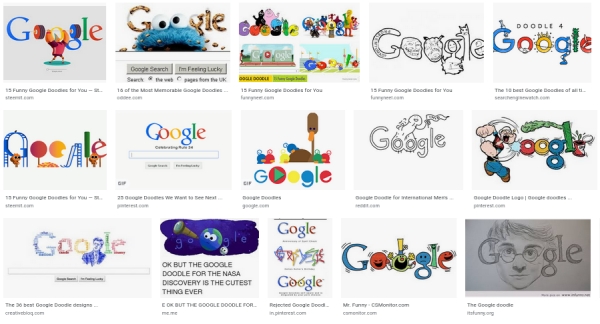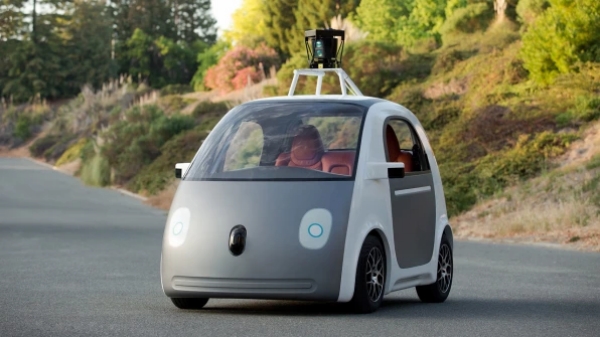Let's talk of our digital infantilization
Ever wondered WHY your digital services look the way they look?
Today, I would like to summarize a chapter of a book titled “Postdigital Aesthetics, that discusses a very important issue: does infantilization of Digital Environments “Amplify Empowerment or Propagate Stupidity?"
A partial, extra short summary of infantilization in digital design
In 2010 Google changed its old logo with one with a more childlike aesthetic, conveying “playfulness”.
By 2014, more and more parts of the online world intended almost exclusively for adults presented itself as more childish than ever before, with animated animals all over the place, like in a fairy tale: foxes (Firefox and FiveThirtyEight) birds (Twitter), Octocats (Github), flyng beavers (Hipmunk), owls ( Hootsuite)…

Infantilization, Google Doodle-style
</em></u>
Meanwhile, Google Doogles were appearing more and more frequently, and websites started replacing “browsing [definite, more structured] pages” with endless scrolling.
These are just a few examples of how “contemporary interfaces and brand designs have started to address adults as if they were kids”.
What is being addressed as a child all about?
Certain design choices turn digital interfaces into “a buddy one can interact with”: a playfellow, not something superior, and therefore intrinsically innocent:
“Addressed as children, we do not need to think about our actions, or bear the consequences. Everything looks easy and fun” (and whoever provides that service looks as Not Evil).
This approach goes hand in hand with “gamification”, and a “ludification of our societies”, that includes work, presented no more “in opposition to leisure”, but as something that by definition, surely “incorporates creativity and play”. [Of course] this is just one part of the general socio-cultural shift of the same kind that has been driving Western societies since day one of consumerism:

<u><em><strong>CAPTION:</strong>
<a href="https://www.fastcompany.com/3031342/top-car-designers-critique-googles-cute-self-driving-car" target="_blank">Google's EXTREMELY high-tech car? A toy with a smiling face (click for source)</a>
</em></u>
But the infantilization of interfaces [also sugests that] there is no need to understand the forces and interests that have created those bright colourful surfaces.
Just use them, “go create! No need to think twice. Simply do as you are invited, and play along happily, dear child."
Stupidity, not understanding, is the desirable state the user should be in.
This infantilization excels at masking stupidity, and its effect is that it turns that same stupidity “from a deficiency to an advantage”. Or, at the very least, to something without harmful real-life consequences, that therefore needs no effort to fix it.
This, in turn, “masks the fact that stupidity has taken on a central role within modern capitalism”, objectively facilitating (without any need for conspiracies!) “the integration of groups and individuals into the system."
Why am I summarizing all this?
Here is why: because that chapter (read it all!) neatly explains that a digital interface may:
- empower you, “assuming you are intelligent and teaching you to outgrow it”_, or…
- patronize you, that is always prevent you from feeling stupid or making mistakes, while effectively controlling you behind the “bright, friendly colours and the technique of infantilization”
This would not be a big deal if we were only talking about toys. But the interfaces we are talking about are exactly those more and more of us use as exclusive source to decide who to mate with, or who to vote. That is why that difference is HUGE, and we should not be happy that is ignored, or canceled.
(This post was drafted in March 2020, but only put online in August, because… my coronavirus reports, of course
Who writes this, why, and how to help
I am Marco Fioretti, tech writer and aspiring polymath doing human-digital research and popularization.
I do it because YOUR civil rights and the quality of YOUR life depend every year more on how software is used AROUND you.
To this end, I have already shared more than a million words on this blog, without any paywall or user tracking, and am sharing the next million through a newsletter, also without any paywall.
The more direct support I get, the more I can continue to inform for free parents, teachers, decision makers, and everybody else who should know more stuff like this. You can support me with paid subscriptions to my newsletter, donations via PayPal (mfioretti@nexaima.net) or LiberaPay, or in any of the other ways listed here.THANKS for your support!